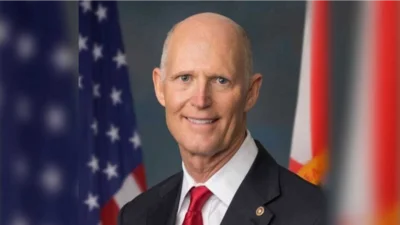Dear Secretary Geithner, Chairmen Bernanke, Gensler, Matz, Shapiro, Acting Chairperson Gruenberg, Acting Director DeMarco, and Acting Comptroller Walsh:
The President, on July 25, spoke to the American public about risks associated with failure to raise the statutory debt limit, saying that: “We would risk sparking a deep economic crisis…" The President warns of a deep crisis and risks to financial stability.
You, the voting members of the Financial Stability Oversight Council (FSOC), are charged by the Dodd-Frank Wall Street Reform and Consumer Protection Act with the responsibility to identify risks and potential emerging threats to the financial stability of the United States.
• Does the Council agree with the President’s assessment that possible failure to raise the statutory debt limit by sometime in early August represents an emerging threat to the financial stability of the United States?
• Does any voting Council member dissent from whatever is the majority view of the Council? If so, please explain precisely why.
Neither the Minutes of the FSOC July 13, 2011 meeting nor the Annual Report of the FSOC, which was approved on July 22, 2011, identify possible failure to raise the statutory debt limit by August 2 as an imminent risk to the financial stability of the United States worthy of a warning to the American people, and do not come close to recent statements by Treasury officials warning of “catastrophe."
In addition to inquiring about the Council’s views on possible risks to financial stability, I write to ask the Council and its voting members about their current knowledge of recent Treasury cash inflows and outflows and projections of those cash flows, daily, through the month of August.
Treasury officials have warned that based on actual and projected revenues and expenditures, along with potential exhaustion of available “extraordinary measures" to avoid breach of the statutory debt limit, the United States will exhaust its borrowing authority under the limit and possibly run out of available cash to pay obligations of the federal government that are due.
Unfortunately, Congress and the American people do not have sufficient information about Treasury’s actual and projected revenues, expenditures, and cash flows to make informed judgments. Many Americans and members of Congress are, unfortunately, relying on estimates and projections from either large Wall Street financial institutions or non-governmental organizations often labeled “think tanks." The lack of information is unsatisfactory.
In a May 2, 2011 letter to Congress, Treasury Secretary Geithner stated the as a result of stronger than anticipated tax receipts, Treasury then estimated that extraordinary measures to provide headroom under the statutory debt limit would be exhausted on Aug. 2, 2011. Since that time, more data have become available. Some reports since that time have indicated that receipts may have been turning out higher than previously expected. Further, the Federal Reserve’s July 2011 Monetary Policy Report to the Congress identifies that “Federal receipts have risen rapidly lately-they are up about 10 percent in the first eight months of fiscal 2011 compared with the same period in fiscal 2010."
I recognize that receipts and Treasury’s cash inflows and outflows can be lumpy and are stochastic. However, the date at which extraordinary measures available to Treasury become exhausted, and cash inflows may prove insufficient to meet incoming obligations that are due, has almost surely changed from the August 2 date estimated by Treasury on May 2. Given incoming data since May 2, does August 2 remain the date with the highest statistical likelihood of being the point in time at which Treasury will run out of extraordinary measures to provide additional headroom under the debt limit and will face insufficient cash inflows relative to obligations that are coming due?
Please provide, by 5:00 p.m., Eastern Standard Time on Thursday, July 28, detailed information known by the Council and by any voting member on:
• Actual revenues and expenditures through July 27;
• Projected or actual daily Treasury cash inflows and outflows for each day between July 28 and Aug. 31, along with methods used to make projections;
• Whether, given current projections of cash inflows and obligations coming due, Treasury would run out of cash and not have sufficient cash available to meet all obligations that become due on any date between August 2 and August 31 (projections here mean point estimates, with the acknowledgement that projections are inherently uncertain);
• Any cash or liquid accounts available (presently or any time during August) to Treasury, such as Treasury’s $5 billion liquid balance sitting idle in its Supplementary Financing Program Account at the Federal Reserve, established to allegedly assist the Federal Reserve with management of its balance sheet during the financial crisis (the Daily Statement of cash and debt operations of the United States Treasury for Monday, July 25, 2011 indicates that the $5 billion was available to Treasury on that date) ;
• Current values of securities and other marketable assets available (presently or any time during August) to Treasury, including mortgage-backed-securities and other financial claims amassed by Treasury during the recent financial crisis, which could be liquidated and converted to cash (my request is for total values, not an assessment of the advisability of asset sales);
• Contingency plans for generation of cash within Treasury in the event that the statutory debt limit is not raised by Aug. 2, 2011;
• Contingency plans of regulators of financial institutions, including any plans for regulatory forebearance, in the event of a ratings downgrade of United States Treasury debt securities;
• Contingency plans of the Federal Reserve System and the Federal Reserve Bank of New York in the event of a ratings downgrade of United States Treasury debt securities, including plans related to “breaking of the buck" by a money market mutual fund, disruptions in the tri-party repo market, disruptions in payment systems or systemically important financial utilities, or creation of programs or facilities with broad-based eligibility under authorities provided by Section 1101 of the Dodd-Frank Wall Street Reform and Consumer Protection Act;
• Any private assurances by any government officials to any financial institution or significant financial market participant that the United States Treasury will not fail to pay principal and interest on Treasury securities even if the statutory debt limit is not raised.
As Ranking Member of the Senate Finance Committee, with a responsibility for oversight of our sovereign debt and Treasury’s cash management practices, I am deeply concerned about the lack of information about upcoming cash flows and reliance of Congress and the American people on non-governmental projections of those flows in decision making. Time is of the essence, and I require, as I stated, the information that I have requested by 5:00 p.m. Eastern Standard Time on Thursday, July 28.
Sincerely,
ORRIN G. HATCH








